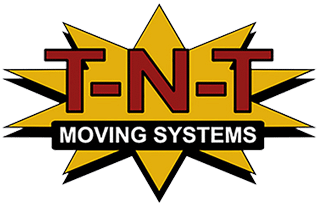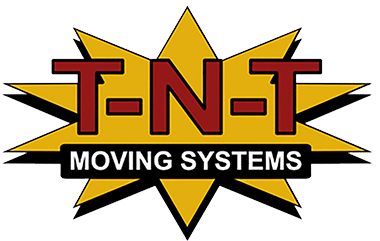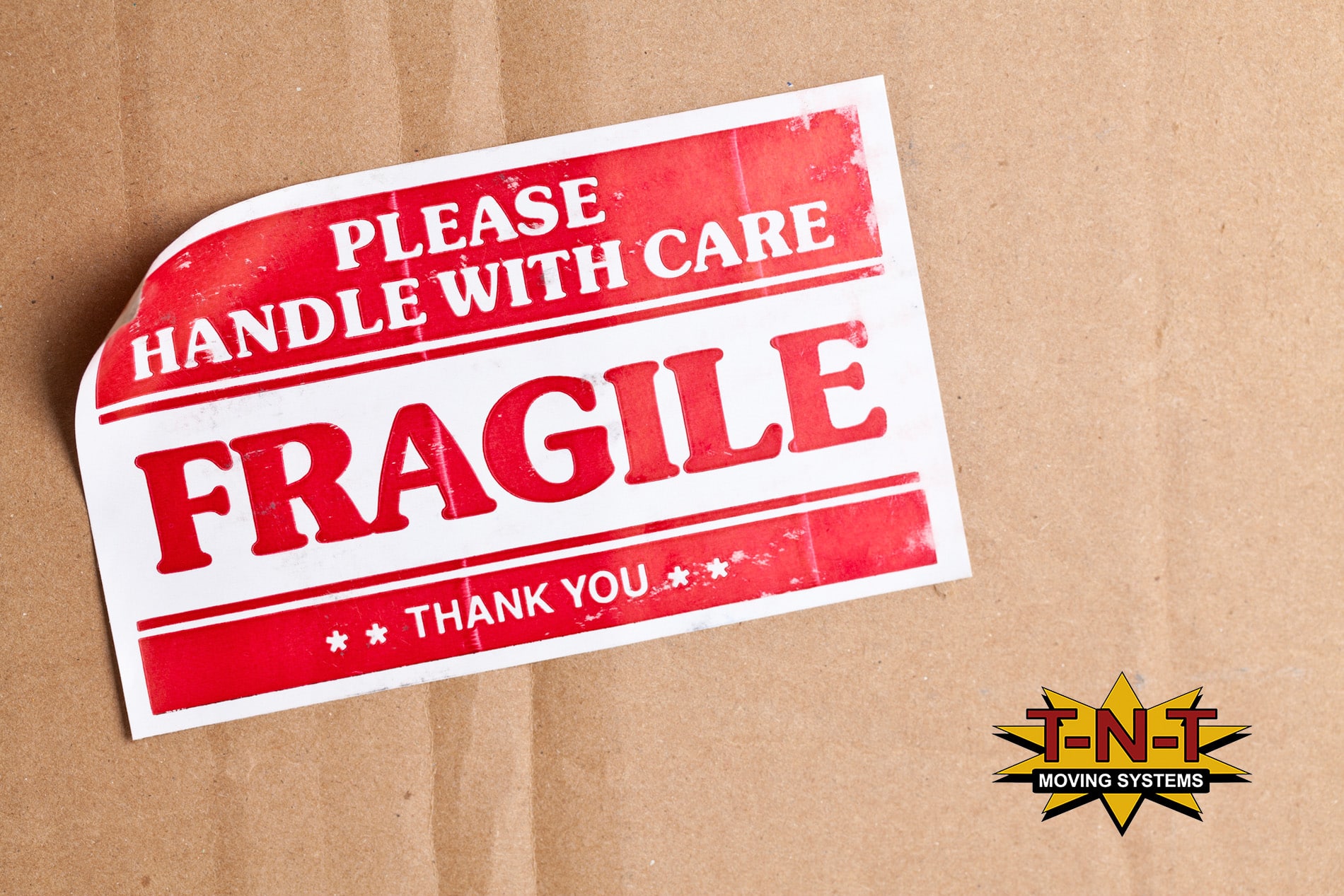Full-Service Movers vs. Do-It-Yourself: Which is Right for You?

When it comes to moving, there are a lot of important elements to consider. Should you do it yourself or leave it to the professionals? What about the costs both visible and hidden? What if something of value gets broken? The choices you make throughout the process can have a major impact on the cost, time, and effort it takes to successfully move from one place to the other. Research and a better understanding of what to expect can help to make your move a much better experience overall.
Moving can mean a lot of different things to different people. You might be a single, college-aged kid moving to a new dorm for your first year of college, or you could be a family of six moving across the country for a new job. Everyone’s situation is unique and, as such, we all have different needs when it comes to moving. So what’s the right level of service for your situation? In this article, we’ll take a look at the different levels of moving help that is available from full-service to do-it-yourself.
Do-It-Yourself
Do-it-yourself moves are just that. You do everything yourself from start to finish. On the surface, this can seem like a simpler, less expensive way to do things. But depending on your situation, it isn’t always the case. Let’s dive into the do-it-yourself moving experience a bit deeper and explore some of the pros and cons.
- Cost – Depending on the number of belongings and the distance traveled, the overall cost of a move can be significantly lower if you decide to do a move yourself. After all, you don’t need to pay for labor. You are the labor! If your move is local and you only have a small number of household goods to move, then this may be a viable option for you. However, if you have a lot of belongings or your move is long distance, you may want to take some time and weigh the costs required to see if it’s worth the potential savings.One of the main costs you’ll confront during a do-it-yourself move is the truck. While moving trucks may advertise cheap daily prices on the sides of their vehicles, the real costs vary extensively depending on the size of the truck and the distance you plan to drive it. Trucks can run as cheap as $20 a day for a local move. However, you will also be charged per mile while you’re using the truck, so distance traveled can certainly make a difference in your decision.Use the table below to determine how many miles per gallon on average different sized moving trucks will achieve. Then visit AAA’s comprehensive gas prices site to find out the average cost per gallon of gas. Enter these numbers into the equations below to figure out the total fuel cost for your move.
| Truck Type* | Miles Per Gallon | Fuel Tank Capacity |
| Pickup Truck | 19 mpg | 34 Gallon Tank |
| Cargo Van | 20 mpg | 26 Gallon Tank |
| 10 Ft. Truck | 10 mpg | 31 Gallon Tank |
| 15 Ft. Truck | 15 mpg | 40 Gallon Tank |
| 17 Ft. Truck | 15 mpg | 40 Gallon Tank |
| 20 Ft. Truck | 10 mpg | 40 Gallon Tank |
| 26 Ft. Truck | 10 mpg | 57 Gallon Tank |
* Based on UHaul truck rental vehicles
Miles per Gallon X Fuel Tank Capacity = Total Miles per Tank
Total Miles Traveled / Total Miles per Tank = Number of Tanks Needed
Number of Tanks Needed X Average Cost per Gallon of Gas = TOTAL COST
In addition to fuel costs, you’ll want to consider extra expenses such as insurance and equipment. It can be tempting to skip the truck insurance to save a little money on the front end, but if anything goes wrong with the truck that’s considered to be your fault, you’ll be on the line for all subsequent damages if you don’t protect yourself. Rentable/Purchasable equipment can range from moving blankets and boxes to a dolly to help with the heavy pieces. Prices will vary depending on what you use and how long you use it for.
- Effort and Time – People often underestimate the amount of effort and time it will take to move. It’s one thing to look around your house and guess how much stuff you have and what it will take to pack and transport it. It’s a complete other when you actually start working through the process and realize you have way more goods than you originally thought you did. Calculate in the time and energy it will take you to:-wrap and box up your household items
– load them into the truck
– drive the truck to your new destination
– unload the truck
– unpack the boxes and distribute them into your new homeAre you prepared (and in shape) to do the heavy lifting required at the front and back ends of the move? Do you have the time to pack up a single-family home? Are you willing to take responsibility for things that are broken or damaged during transit?The other consideration to make is whether or not you feel comfortable driving a 26’ truck from one location to the other. If you run through this list and are still feeling pretty good about handling your own move, run the numbers to see the difference in overall cost. If the savings are worth it than going the do-it-yourself route might be the choice for you.
Hybrid Move
For a lot of families, choosing something between a full-service and a do-it-yourself move is the best option. This could be a move where you have professionals pack and unpack your belongings but you do the driving. It could also be the other way around where you have professionals drive the truck and you do the packing. Either way, it’s a method that allows you to save some money by taking responsibility for the part of the process you feel comfortable with and leaving the part you don’t feel comfortable handling to someone else.
An additional option for a hybrid move is one where you rent a container that is dropped on your property and you fill it yourself. When you’re ready to have it moved, the company returns to pick up the container and drive it to your destination where they once again place it on your property until you finish unloading it. The one advantage to this service is they can also store your container if needed (for an additional cost of course). This way if you arrive in a new city and are renting while you look for a home or have some other situation where you’re not moving into a permanent location right away, you don’t need to go through the hassle of unloading into a storage center and then “re-moving” all your stuff again once you’re ready to unpack it. You simply let the company know when you’re ready for your container and they drop it at your new home ready to be unloaded.
Full-Service Move
A full-service move is exactly how it sounds. You hire a company to pack up your home, move your belongs and unpack again at the final destination. As expected, this method is commonly the most expensive form of moving. However, you can plan on saving a lot of time and effort in exchange because you are able to leave the hard work to the professionals. An additional upside with this option is that if something breaks in the process of moving, it is the responsibility of the movers, not you, to fix the issue. The cost of a full-service move is typically calculated based on the weight of the load, labor costs, time of year, and the distance traveled.
Handling Damage/Insurance
The type of move you choose will determine how you handle any potential damage to your property. When using professional movers, they will typically include insurance to help cover your belongings during packing and transit. There are different levels of insurance offered depending on the mover you select, so if you choose to use a moving company, be sure and ask them about what protections are included in the cost as well as any additional coverage that might be available as an add on. If you decide to do the move on your own, there are several options that may be available through your insurance company to help protect your belongings in transit.
Saving Money
Any way you look at it, moving is an expensive endeavor. Check out some of the tips below for ways to save a little money during the process.
- Declutter Your Home – One of the main factors in determining the overall cost of a move is the total weight of the load once your home is fully packed and placed on the truck. You can save yourself some money by determining what can stay and what should go before the movers estimate the total cost of your belongings. Make some extra money on the items you don’t need through a garage sale or by donating it to a local charity for a future tax write-off.
- Collect Free Moving Supplies – Boxes and other moving supplies may not seem like a large cost in the moment, but depending on how big your move is, it can quickly begin to add up. To save a little money ahead of time, find businesses or sites that offer free boxes or other items you might need. Online ideas where you can check include Craigslist, Freecycle, and Nextdoor. Out in the community, a few places to look include liquor stores, big box stores such as Walmart or Target, and grocery stores.
- When You Move Matters – When you’re ready to start planning a move, keep in mind that the month and even the day you choose for the big event will affect the overall cost. A midweek move will almost always cost less than a weekend move. Another factor to consider is the season. 70% of moves annually take place in the summer. If you have the flexibility to schedule during the offseason, you have the potential to save yourself a handful of money.
- Think Beyond the Box – Just because you’re moving doesn’t mean you have to use a box for packing all your belongings. Items such as laundry baskets, suitcases, and coolers can work just as well to transport goods and are most likely already in your possession to use for free.
We know that planning a move can sometimes lead to more questions than answers. If there is anything that wasn’t answered in this article or on our site that you would like to know, please don’t hesitate to contact us! We’re here for you and your family and are happy to answer any questions that might arise during the process.
-Julie Mastbrook
Works Cited
Barnett, Jami. “What’s the Best Way to Move?” ConsumerAffairs, ConsumerAffairs, 3 July 2019, www.consumeraffairs.com/movers/moving-yourself-vs-hiring-movers.html.
“Getting the Right Insurance Coverage for Moving.” III, www.iii.org/article/getting-right-insurance-coverage-moving.
“Hiring Movers Vs. Moving Yourself: The PROs & CONs Of Each.” Https://Www.rochesterrealestateblog.com, 27 Apr. 2019, www.rochesterrealestateblog.com/hiring-movers-vs-moving-yourself/.
“Should I Move Myself or Hire a Professional Mover?” Move.org, 1 May 2019, www.move.org/hire-mover/.
White, Marian. “What Is the Gas Mileage of a U-Haul Truck Rental?” Moving.com, Moving.com, 19 Feb. 2019, www.moving.com/tips/what-is-the-gas-mileage-of-a-u-haul-truck-rental/.




